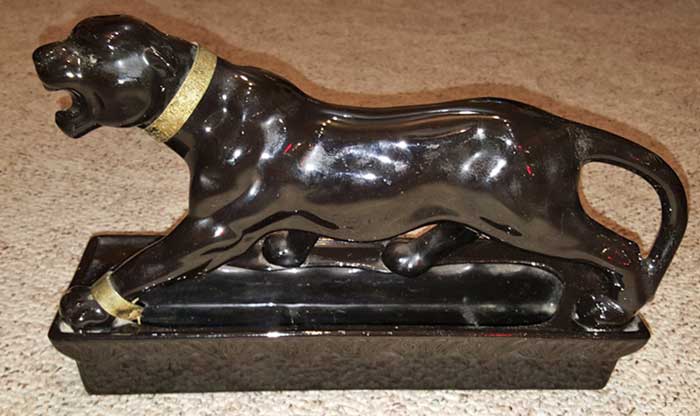Postwar Television Lane & Company Panther TV Lamp (1953)
Much was made of the possibility that watching television in a darkened room could result in eye damage. Keeping in mind that consumers had been accustomed to watching movies in darkened movie theaters, it was only natural that the tradition would transfer to home viewing. The earliest televisions were also rather low luminosity, making low-light viewing a genuine benefit. It wasn't long before many of these televisions were topped with a new adornment, a ceramic, back-lit statuette...the TV lamp. It was felt that the ambient light generated by these lamps reduced eye strain, permitting guilt-free viewing. Soon TV lamps became a must-have addition to the family television, positioned front and center, rather like a hood ornament on a 50s-era automobile. While their reign as a favorite piece of home decor only lasted about 10 years, they possess a significance in design that is an influence even today. TV lamps came in thousands of designs from hundreds of manufacturers, and while they were made out of other materials, the vast majority were ceramic, coated with a shiny glaze in one of the popular colors of the day. Most of these charming household sculptures represented members of the animal kingdom (horse, deer, dogs, birds, domestic cats and the ever-popular panther) but some were of people (often oriental, but mermaids were also represented) and still others were purely an exercise in abstract design. Donated by Jim Breunig |

